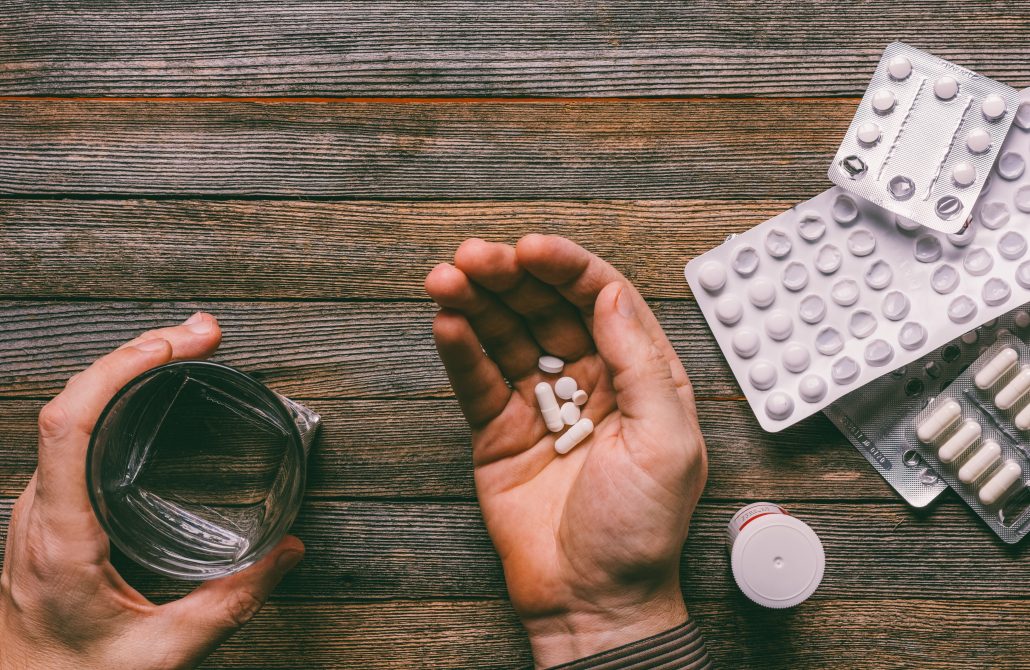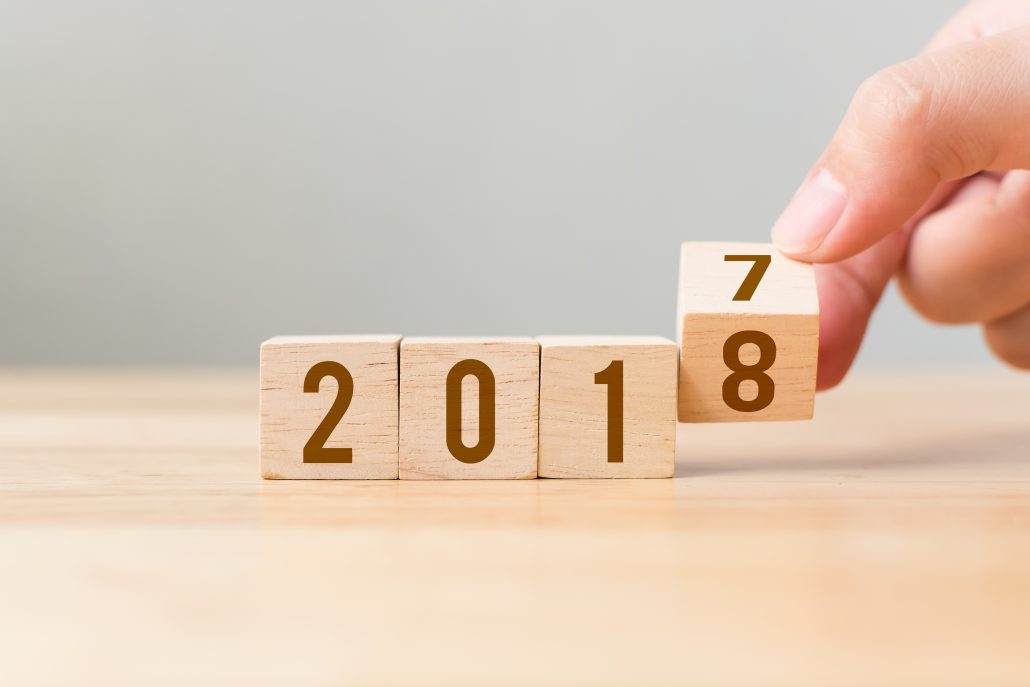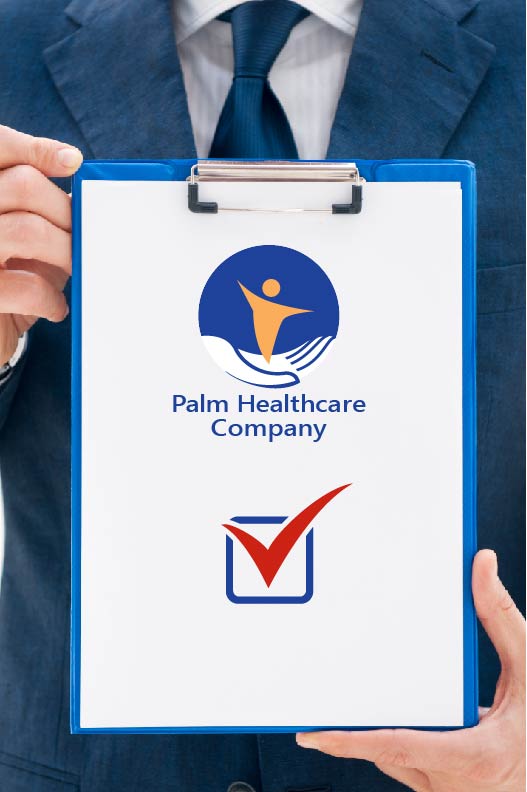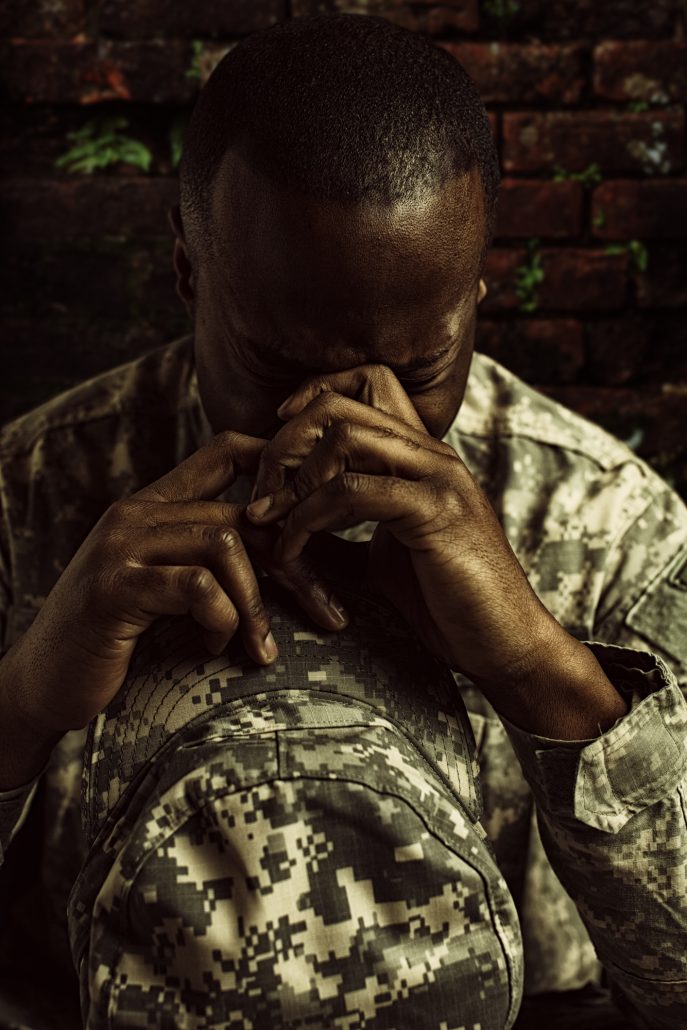by Justin Mckibben | Jan 19, 2018 | Anxiety Disorder, Coping Skills, Dual Diagnosis, Mental Health, News, Opioids, Prescription Drugs, Suicide

Over the last 15 years, the suicide rate has climbed by an estimated 32%. While the overdose deaths in relation to the opioid crisis have become a constant issue around the country, some researchers suggest that the real suicide rates are even higher, but some of them are being misclassified as overdoses.
So, are more people dying due to drug abuse, or are more people taking their own lives using powerful street drugs and prescription narcotics?
Studying Suicide and Drugs
The idea that many of the deaths recorded as opioid overdoses may have been suicides, according to the researchers, is due to a significant gap between suicide rates and intoxication mortality rates.
A study from the Luskin School of Public Affairs at the University of California, Los Angeles, was published in the journal PLOS One. This study states that both suicide and drug intoxication death rates in the United States have risen over a period of 15 years. Researchers compiled data from the Center for Disease Control and Prevention (CDC) to show:
- 2000- The suicide rate was 10.40 per 100,000 people
- 2015- Suicide rate rose to 13.75 deaths per 100,000 people
- 2000- Drug intoxication mortality rate for those over the age of 15 was 7.81 deaths per 100,000
- 2015- Drug intoxication death rate for those over the age of 15 rose to 20.07 per 100,000 in 2015
This means that the drug intoxication death rate rose by 257% in those 15 years, while suicide rates only rose by 32%. While 32% is still a devastating number when it comes to such a tragic circumstance, there is still a huge difference between 32% and 257%. These researchers believe this major difference in the reports of mortality rates suggests a lack of suicide reporting.
Difficulties in Death Investigation
One of the big problems, according to the study’s author Mark Kaplan, is resources. Kaplan is a professor of social welfare at UCLA, and he stated to local news sources,
“Unfortunately, part of the problem is due to serious under-resourcing of state and local death investigation systems throughout most of the U.S.
“Many of these deaths were probably suicides, yet reported as accidental self-poisoning rather than intentional self-harm, particularly among the middle-aged.”
The study by Kaplan and his colleagues further explains that when it comes to suicide by overdose, things like an individual’s psychiatric history or the presence of a suicide note are crucial to helping professionals identify a death as a suicide.
“A suicide note, prior suicide attempt or affective disorder was documented in less than one-third of suicides and one-quarter of undetermined deaths,”
“Our incorporation of undetermined deaths, as well as registered suicides, not only provided a window on the nature of suicide misclassification within the undetermined death category but within the accident category—as a much larger reservoir for obscuring drug intoxication suicides.”
So by acknowledging that there is not always an obvious indication that a death is a suicide, even in cases that are classified in suicide, the researchers believe that many deaths that involved drugs have most likely been categorized as overdoses instead of making a deeper inquiry into the circumstances surrounding an individual’s death.
Opioids Causing Ambiguity
With the opioid crisis in America, it has become even more difficult to measure the suicide rates. And that isn’t just this research teams opinion either.
In 2015, the CDC hosted a meeting to address the challenges presented for medical examiners and coroners across the country. The primary focus was concerning cases of fatal intoxication due to opioids and other drugs. The summary of this meeting concluded that drug intoxication deaths may be among the most difficult to determine regarding the manner of death. The summary notes that reasons for such difficulty in having a more accurate manner of death include:
- Potentially equivocal evidence
- Intent to die
- Overlapping demographic groups affected
- Overlapping premorbid risk factors (e.g., substance abuse, mental health problems).
Opioid addiction, much like any other form of substance use disorder, is often closely connected to other issues, including anxiety, trauma and mental health disorders. Some individuals living with mental health conditions who abuse opioids may be self-medicating and accidentally overdose. But others may be suffering so severely, with conditions like depressive disorders or bipolar disorder, that they ultimately take their own lives intentionally with the powerful drugs. With opioid abuse being so widespread and devastating, the line between the two has begun to blur.
Both studies mentioned clearly indicate in order to truly comprehend an accurate number of suicides by overdose, more research is needed. Both also admit that the number may never be exact.
Even though we will probably never have a definitive answer, the question is still important to ask. By knowing whether opioid deaths are caused by accidents or intentional we can develop better strategies to provide education and prevention.
This is also why mental health should always be a priority when it comes to addiction treatment.
Substance use disorder and suicide are both connected to mental health and personal wellness. Too often they both lead to avoidable tragedies. Therefore, mental health and wellness should be a priority for addiction treatment. If you or someone you love is struggling with substance abuse or addiction, please call toll-free now.
CALL NOW 1-888-922-5398
by Justin Mckibben | Jan 3, 2018 | Addiction, Addiction Treatment, Donald Trump, Drug Abuse, Drug Policy, Dual Diagnosis, Family, Fentanyl, Inpatient Treatment, Law Enforcement, Mental Health, News, PAARI, Prescription Drugs, Professionals, Recovery, Sobriety, Stigma, Synthetic Drugs

With the beginning of the new year, Palm Healthcare Company is looking forward to helping spread more exciting stories of experience, strength, and hope while also sharing important news stories and exciting new developments that relate to the world of addiction recovery and substance use disorder treatment. As we commit ourselves to another year of fighting alongside thousands of people working toward a better future, we would also like to take some time looking back on all the big moments in 2017 that we shared with our Palm Healthcare Company Blog.
-
President Trump Declares Public Health Emergency: What’s the Plan?

October of 2017, President Donald Trump made an announcement declaring the opioid crisis in America as a Public Health Emergency. This highly anticipated declaration was delivered in a way slightly different than many had expected, noting the technical differences between a Public Health Emergency and a National Emergency.
Many advocates were concerned that this announcement did not provide a concrete foundation for the necessary federal funding and did not initiate much-needed action, but others we assured that this means the Trump administration was taking this issue very seriously. In this article, we took a look at what this announcement did actually accomplish, and what it failed to deliver on.
-
Racketeering for Fentanyl: Opioid Maker Insys Founder Arrested for Bribes

A huge development to another story came in late 2017 when John Kapoor, former CEO of Insys Therapeutics and founding father of one of the most prominent opioid manufacturers in the country, was arrested and charged with conspiring to push the signature drug of Insys Therapeutics, a Fentanyl spray called Subsys, for unacceptable uses through bribes and kickbacks.
The Palm Healthcare Company blog notes how back in 2016 the Justice Department reported to be charging 6 former executives and sales-managers of Insys Therapeutics for conspiring to defraud health insurers.
When looking at the details in this story, it has intensified the conversation about Big Pharma involvement in the epidemic
-
Can Kellyanne Conway Really Compete with the Opioid Crisis?

Not too long after President Trump’s declaration of a Public Health Emergency pertaining to the opioid crisis, Kellyanne Conway was announced as leading the charge on the White House’s efforts for addressing the opioid epidemic.
This Palm Healthcare Company blog saw a lot of comments!
While some find that having a high-profile figure at the head of the efforts gives validity to the White House’s commitment to solving the opioid issue in America, many others are speaking out in frustration. Those in opposition to this appointment say that while she may be useful as a counselor or pollster, she has no experience of expertise when it comes to drug abuse, addiction or substance use disorder treatment.
Thus far the one thing both Kellyanne and the President seem adamant about is a media campaign, but advocates are still afraid this is more “Just Say No” and not enough support for effective resources.
-
After Las Vegas Shooting: PTSD and Mental Health Must be Priority

In early October of 2016, the nation was shaken to its core when Las Vegas had one of the deadliest shootings in modern American history. This horrific tragedy flooded newsrooms and live viral footage with the country watching in shock as a gunman killed 58 people and injured 546 more at an outdoor music festival.
In the aftermath of this terrible and heartbreaking incident, our Palm Healthcare Company blog took a look at how such traumatic experiences impact people, and about the importance of those who struggle with Post-traumatic Stress Disorder (PTSD) getting proper diagnosis and care.
At a time when so many people are self-medicating with dangerous or even deadly narcotics, it is important to care for those most vulnerable, especially after such an earth-shattering experience.
-
Police Helping Addicts into Treatment is a Growing Trend Saving Lives

In August of 2017, we took a look back at several programs that had come to light all over the country based on Police Departments working with their communities to offer drug users the chance to get help with addiction treatment instead of being arrested and charged.
The pioneering program came from Gloucester Police Department in Massachusetts back in 2015. This program allowed users to ask police for help, and told addicts they could submit drugs to local law enforcement without fear of being arrested if they were willing to seek treatment. A 2016 study showed that this program was experiencing some impressive success.
Police departments in a number of other states were inspired by this and took up similar programs as a way to help their communities fight the addiction outbreak.
The Palm Healthcare Company blog took a close look at a handful of these programs to celebrate their compassion and success.
-
Sterilized for Cash: This Woman Pays Drug Addicts to Not Have Kids

Pregnant lady’s stomach and her hand holding dollar over black background
When we posted this Palm Healthcare Company blog we saw a great deal of debate in the comments on our Facebook. For over 20 years, Barbara Harris has driven across the country using cash to ask addicted women to give up their fertility. To date, the organization has paid over 7,000 people.
The controversy around such a powerful story had some people showing a great deal of support for someone giving addicted women an incentive to not get pregnant, while other people were appalled and angered that someone would entice desperate women who are not in the right mindset to make such dramatic and life-altering decisions with their bodies.
-
What Chester Bennington Taught Us about Addiction and Depression

(This content is being used for illustrative purposes only; any person depicted in the content is a model)
In July of 2017, the world lost a great artist and inspirational musician with the death of Chester Bennington, the lead singer of the band Linkin Park.
Initial reports were that Bennington had died from suicide by hanging, with later reports indicating that Chester had been drinking at the time of his death. The vocalist had been open about his struggles with depression and drug addiction over the years, and in this article, we took a look at just how much Chester Bennington could teach us about the devastation of depression and addiction.
-
Dear Media, Thank You for Bad Press

South Florida has been under a great deal of scrutiny recently, specifically concerning the issues facing the recovery community such as unethical and illegitimate sober home operators in the area. In June, there was a Megyn Kelly NBC News Investigation which focused in on Delray Beach, Florida and some of the big problems concerning unscrupulous activities from corrupt individuals exploiting drug addicts in need of help.
We took this time to look over some of the bigger stories concerning the illicit activities in South Florida with the recovery industry while showing support and gratitude for all those working together to try and put an end to operators who are taking advantage of people in need of help.
-
Palm Healthcare Measures Up to Addiction Treatment Outline for EAP

In September of 2017, we took a very close look at an article written by the Journal of Employee Assistance that was designed to help Employee Assistance Programs (EAPs) find the right kind of addiction treatment programs to recommend to their clients.
The outline given for EAPs to find effective and reliable addiction treatment options gives a list of things to look for. The Palm Healthcare Company blog was happy to show off just how all of our facilities measure up to these crucial standards.
Keep an Eye Out for More
Palm Healthcare Company continues to try and share every treatment development, news story or exciting innovation on our blog to not only help more people learn and raise awareness but to offer some perspective and maybe ask some new questions.
Whether it is sports, celebrities, news or politics we are committed to talking about important stories that pertain to drug policy in America, substance use disorder, mental health, and personal wellness. We will continue to touch on the top stories of 2018 to spread the word and hopefully inspire more people to get involved in these crucial conversations.
2017 was an intense, innovative and inspiring year. Here is to hope for 2018.
Holistic addiction treatment means incorporating every aspect of life for each individual with personalized opportunities for lasting recovery. So every bit of information can help anyone make a more comprehensive decision about what kind of recovery plan they want. If you or someone you love is struggling, please call toll-free now.
CALL NOW 1-888-922-5398
by Justin Mckibben | Oct 13, 2017 | Depression, Dual Diagnosis, Mental Health, Mental Health Stigma, Panic Disorder, Post-traumatic Stress Disorder, Recovery, Suicide, Therapy, Veterans

(This content is being used for illustrative purposes only; any person depicted in the content is a model)
When we talk about fighting the addiction problem in America and better understanding substance use disorder, we have to acknowledge those who are at a specific risk for suffering from substance use. Far too many American soldiers come home only to fight another devastating, heartbreaking battle.
With addiction being considered a mental health issue, it should be clear the contribution of overall mental health makes to causing substance use disorder (SUD) in many cases. Depression, bipolar disorder, generalized anxiety disorders and post-traumatic stress disorder (PTSD) are all mental health issues that often associated with addiction.
Some of those susceptible to mental health disorders and substance abuse are those who fight for the safety and freedom of our country; our Veterans. So we need to acknowledge the mental health issues that the men and women who sacrifice everything for this nation are suffering through. We need to talk about how to best understand these conditions, and how to best treat those in need.
Veteran Mental Health Disorder Statistics
According to the RAND Center for Military Health Policy Research:
-
20% of Veterans who served in either Iraq or Afghanistan suffer from either major depression or PTSD
-
5% of Veterans in these two categories have suffered a traumatic brain injury
According to the U.S. Department of Federal Affairs:
-
More than 2 out of 10 veterans with PTSD also suffer from SUD
-
In the wars in Iraq and Afghanistan, about 1 in 10 returning soldiers seen in VA have a problem with alcohol or other drugs.
-
Almost 1 out of every 3 Veterans seeking treatment for SUD also has PTSD.
-
War Veterans with PTSD and alcohol problems tend to be binge drinkers.
-
Among all U.S. adult deaths from suicide, 18% (7,403) were identified as Veterans of U.S. military service
Probably one of the most troubling statistics comes from a study by the Substance Abuse and Mental Health Services Administration (SAMHSA) which tragically revealed:
Only 50% of returning vets who need veteran mental health treatment will receive these services.
That is an extremely troubling number. It says a lot about how Veterans are struggling to get the help they need when you realize that only around half of them ever get it.
Veterans and Substance Abuse
One of the hardest issues to address when examining the veteran mental health issue is substance abuse and SUD. It is also one of the most important aspects of Veteran mental health treatment that need to be acknowledged.
The National Institute on Drug Abuse (NIDA) reports that substance abuse among veterans is strongly connected to their experiences in combat and how they struggle to cope with these traumas. Various NIDA studies indicate that:
-
25% of Veterans returning from Iraq and Afghanistan showed signs of SUD
-
In 2008, active duty and veteran military personnel abused prescription drugs at a rate that was more than twice the rate for the civilian population
-
In 2009, the VA estimated that around 13,000 vets from Iraq and Afghanistan suffer from alcohol dependence syndrome and require veteran mental health treatment for this problem.
PTSD and SUD
A lot of people, even those who are not Veterans but have experienced great trauma, use substances to self-medicate and deal with PTSD. Even for those who have never had an issue with substances or may never have even used substances, PTSD increases the risk an individual can develop a drinking or drug problem or SUD.
To make matters worse, PTSD and SUD can likely lead to other problems in life, including health. These Veteran mental health issues can often be associated with:
Ultimately, using drugs or alcohol in combination with PTSD might seem to make things easier, but will actually make them a lot worse. It creates a vicious cycle of numbing and re-traumatizing.
Better Treatment for Veteran Mental Health and Addiction
Many advocates for Veteran services, including the National Veterans Foundation (NVF), believe:
- More funding needs to be allocated for Veteran mental health care services so that every veteran has easy access to this type of care.
- Excessive wait times at local VA facilities need to be addressed in order to grant people the access they need to these services.
The NVF website states:
“We can no longer look the other way or continue to underfund the mental health care system that our veterans use.”
This should absolutely be a priority. Strengthening the system that provides mental health care not just to citizens who are suffering, but to our vets who have given so much and desperately need help, is crucial to saving lives from substance use disorder.
Not only does Palm Healthcare Company understand the importance of providing quality addiction recovery treatment, but we also know how important dual diagnosis treatment is for those who suffer from serious mental health conditions like PTSD or major depression along with addiction. Better treatment means addressing both conditions simultaneously, to help the individual heal holistically.
Palm Healthcare Company also knows how important it is to help those first responders and Veterans that put their lives on the line every day. That is why we are a proud sponsor of the Harrigan Foundation’s Annual Run to the Rescue 5K to raise money for the treatment of first responders and veterans.
To find out more about this event, visit the link here:
Harrigan Foundation’s Annual RUN TO THE RESCUE 5K
Mental health care and addiction treatment for vets is an important resource that can save lives and our veterans put their lives back together after experiencing trauma and hardship that causes PTSD and the devastation of substance abuse. If you or a loved one is struggling, you don’t have to fight alone. Please call toll-free now.
CALL NOW 1-888-922-5398
by Justin Mckibben | Oct 6, 2017 | Anxiety Disorder, Death, Depression, Dual Diagnosis, Mental Health, Mood Disorders, Prescription Drugs, Recovery

There are many national observances every month, all year round, that remind us of issues that may not always be on the forefront of our minds. These issues are typically not something everyone will put much thought into each day, but when we pause to acknowledge them for a few days at a time we may realize these are real problems that affect real people every single day. Some of these issues go unseen, like mental health disorders. One of these observances for the month of October is National Antidepressant Death Awareness Month.
If you never realized this was an actual observance, then that is kind of the point. The fact that this is enough of an issue to acknowledge for one month out of a year should speak volumes. The fact a lot of people don’t even realize it is happening says a lot too.
Let us be clear: this article is NOT to discredit or denounce the use of antidepressant medications. It is simply to acknowledge the importance of awareness and education.
So what does this observance mean?
#AntidepressantDeathAwarenessMonth
The purpose of National Antidepressant Death Awareness Month is to remember those who have been injured or killed as a result of antidepressant use. Part of this commemoration is to urge people to always report any adverse reactions while taking any drugs to the FDA, especially in cases that end in death. Depression is a common mental health disorder in the United States. In fact, recent data shows:
- More than 300 million people suffer from depression globally
- Approximately 16 million adults in the US had at least one major depressive episode in 2012
- Depression is the leading cause of disability worldwide
- 11% of adolescents have a depressive disorder by age 18
- 10%-20% of new moms will experience postpartum depression
- 30% of college students report feeling depressed enough it disrupted their performance in school
- 50% of Americans with major depression don’t seek treatment
Needless to say, depression is a prominent condition that impacts a lot of people across America. So of course, antidepressant medications are a valued resource in mental health treatment. However, excessive use of antidepressant medications or dependence on these drugs can lead to some devastating consequences.
Too often people joke about needing to “pop a Prozac” or “borrow a Zoloft” to relax, but these medications are nothing to play around with.
Antidepressants and Suicide
In 2016 reports came out about a suicide epidemic in America. According to the World Health Organization suicide was the 3rd leading cause of death in 2015, representing a 60% increase worldwide over 45 years! A report from the Center for Disease Control and Prevention (CDC) found an estimated 9.3 million adults in the United States (3.9% of the adult population) reported having suicidal thoughts in that past year.
With such shocking statistics, researchers decided to examine data on suicides and the antidepressants associated with some cases. Of most of the medications the most disturbing revelations were those for:
- Selective Serotonin Reuptake Inhibitors (SSRIs)
- Serotonin-norepinephrine Reuptake Inhibitors (SNRIs)
The review revealed that these antidepressants actually seemed to double the rate of suicide and aggressive behavior for adolescents and young people under the age of 18.
So drugs intended to treat depression actually increased risks of harmful side-effects. But even more disheartening is the fact the Big Pharma companies behind these medications were documenting “serious underestimation of the harms.” Meaning they believe drug makers misreported their findings from case studies. In many cases, researchers concluded more serious side-effects were being recorded as something else.
Side-Effects of Antidepressants
Antidepressant drugs can be very useful, but they are still drugs and should always be taken seriously. Not only can antidepressants be detrimental to emotional stability, but they cause various physical side-effects as well.
Some of the more common side-effects of antidepressants include:
- Anxiety
- Agitation
- Blurred vision
- Constipation
- Dizziness
- Nausea
- Increased appetite
- Weight gain
- Sexual dysfunction
- Fatigue
- Insomnia
- Dry mouth
- Irritability
There are other more serious health concerns that certain antidepressant drugs can contribute to as well, including:
Depending on the particular substance, some of these adverse effects of symptoms may differ. One should always speak with their doctor about the possible adverse effects of any medication and be sure to discuss all treatment options.
Be sure to consult your doctor before discontinuing any medications as well. Some of these medications can cause adverse effects when abruptly discontinued. Again, the point of this conversation is not to scare anyone away from antidepressant medications; it is simply to encourage anyone who may be taking these kinds of medications to be aware and make informed decisions with the help of your doctor.
Antidepressant Dependence
The connection between antidepressants and addiction isn’t as clear as other drugs. Doctors still debate the addictive nature of antidepressant medications, with most considering them non-addictive. However, it is possible to develop a dependence on antidepressants.
Antidepressant medications alter the brain’s chemical activity. So a lot of people use antidepressants excessively because they feel like they cannot function normally unless chemical changes in their brain activity take place. So while antidepressants may not be as addictive as other narcotic medications, people can depend on the drug to feel ‘normal’.
Antidepressant dependence commonly forms in people who never needed the drug for medical reasons. Some people receive an incorrect diagnosis of depression and thus end up on antidepressants. According to one study, doctors misdiagnosed almost 2/3 of patients with depression and prescribed unnecessary antidepressants. Still, others will abuse antidepressants for a psychostimulant-like effect.
The use of the drugs also becomes even more dangerous when combined with alcohol. People suffering from addiction to other drugs, including alcohol, also run a higher risk of abusing their antidepressants.
Combining alcohol and antidepressants can cause problems such as:
- Worsened depression or anxiety
- Intense sedation
- Dangerously high blood pressure
- Impaired coordination
- Overdose
Abuse of antidepressants can lead to overdose. Symptoms of antidepressant overdose often include:
- Impaired coordination
- Confusion
- Fainting
- Uncontrollable shaking
- Dizziness
- Irregular heartbeat
Safety before Stigma
Of course, no one should ever be afraid or embarrassed about taking an antidepressant medication. That kind of assistance can be an essential piece of someone’s balance in life, and there is no judgment.
In the realm of recovery from drug or alcohol addiction, it is important for people to understand the difficulties that others may face and accept that medical assistance might be necessary for some people to safely and comfortably grow while letting go of other dangerous substances. As long as people are willing to be mindful of how a medication effects them and take appropriate steps to protect themselves, recovery with the help of antidepressants is absolutely possible.
Approximately one in every eight adults in America take antidepressants, which are among the most commonly used medications. These medications can be life altering and important to overall health, but they must be taken seriously. This month we remember all those who have suffered through depression and been adversely affected by antidepressants. We remember those who lost their lives due to complications related to antidepressant medications, and we strive for better understanding and use of these medications to preserve lives.
Abusing prescription medications like antidepressants is extremely dangerous, and if you are trying to overcome an addiction or mental health disorder this can put you in even more danger. Getting the right kind of treatment can make all the difference. If you or someone you love is struggling, please call toll-free now.
CALL NOW 1-888-922-5398
by Justin Mckibben | Oct 5, 2017 | Coping Skills, Death, Drug Abuse, Dual Diagnosis, Mental Health, Panic Disorder, Post-traumatic Stress Disorder

Just this past Sunday the nation saw one of the deadliest shootings in modern American history in Las Vegas. This immense and indescribable tragedy shocked the world as news reports and live footage filled the airwaves after a gunman opened fire with high-powered rifles at an outdoor music festival. At this point there are at least 58 dead and over 520 wounded, making it the deadliest mass shooting in recent history.
The heartbreak and weight of this tragedy truly cannot be put into words. The unimaginable loss is without parallel. Beyond those who lost their lives in such a senseless act of violence, the impacts this event has had on countless friends, families and loved ones are unfathomable.
In the aftermath of the Las Vegas shooting, mental health must be a priority. How we address and protect the psychological well-being of every American must be a very serious part of the conversation. We have to take a close look at how we are facing mental health, and support those who have been traumatized in the wake of such horrific events.
PTSD of Mass Shootings
The risks of post-traumatic stress disorder (PTSD) is extremely elevated in situations like this. Research on mass shootings is not extensive but is sufficient enough to allow for some preliminary conclusions. One study examined 15 mass shooting events to review consequences of the incidents upon survivors. From these studies conclusion, researchers stated:
- Prevalence of post-disaster diagnoses (predominantly PTSD) in these studies ranged from 10% to 36%
- Much higher percentages reported sub-threshold PTSD
- Very few participants reported no symptoms
One 1994 study in the American Journal of Psychiatry shows that in the acute post-disaster period:
- 20% of the men met criteria for PTSD after a mass shooting
- 36% of the women met criteria for PTSD
The same study looked at those with post-disaster PTSD who also met criteria for another post-disaster psychiatric diagnosis, especially major depression. They found:
- One-half of the women met the criteria
- One-fourth of the men met the criteria
Experts say most people will recover fully from post-disaster PTSD within 6 to 16 months, but most still emphasize the importance of support.
Not only can those present at the tragedy be affected directly, but also those not present but connected to the location or individuals present can be affected vicariously. You don’t have to experience something so horrifying first-hand to suffer a severe impact. An attack like this can have deep emotional effects on those who witness the event, or even for those all over the world following the story.
Understanding PTSD
Part of dealing with the residual effects of tragic events and disasters is to understand how conditions like PTSD can impact people. PTSD can result in emotional, physical and even cognitive issues that some people may not know how to recognize or cope with.
Emotional Effects of PTSD Include
- Shock
- Terror
- Irritability
- Blame
- Anger
- Guilt
- Grief or sadness
- Emotional numbing
- Helplessness
- Loss of pleasure derived from familiar activities
- Difficulty feeling happy
- Difficulty experiencing loving feelings
Physical Effects of PTSD Include
- Headaches
- Fatigue
- Exhaustion
- Insomnia
- Startle response
- Cardiovascular strain
- Increased physical pain
- Reduced immune response
- Gastrointestinal upset
- Decreased appetite
- Decreased libido
Cognitive Effects of PTSD Include
- Decreased concentration
- Confusion
- Impaired decision making
- Disbelief
- Dissociation
- Nightmares
- Impaired Memory
- Decreased self-esteem
- Reduced self-efficacy
- Self-blame
- Intrusive thoughts/memories
- Anxiety
All of these things can cause other more personal issues. Some will experience difficulty with intimacy or social relationships. Isolation and alienation can develop at work, at school or even at home.
According to PTSD United, a nonprofit organization dedicated to providing support and resources for those suffering from PTSD:
- 70% of adults (approximately 223.4 million people) in the US have experienced some type of traumatic event at least once in their lives.
- Up to 20% of these people go on to develop PTSD.
- Approximately 44.7 million people today either have struggled or are struggling with PTSD.
With PTSD, a lot of people actually turn to drugs or alcohol to self-medicate. Some will rely on substances as a form of relief when PTSD brings feelings of isolation or depression. However, as people try to numb or distract themselves from these feelings, they tend to create more problems through substance use.
Often times, the substances only fuel feelings of isolation, depression or anxiety.
Make Mental Health a Priority
This week, October 1 through October 7, is Mental Illness Awareness Week. There is no time like the present to discuss the current state of mental health across the country. Now is always the time to advocate for better support, services, and acceptance when discussing mental illness and mental health in America.
According to the National Institute of Mental Health (NIMH):
- 9% of all U.S. adults (43.4 million)qualified as having mental health issues in 2015
- Approximately 20-21% of incarcerated Americans have a “recent history” of mental health issues
- 70% of young people caught up in the juvenile justice system have at least one mental health issue
- 46% of people living in homeless shelters live with severe mental health issues and/or substance use disorders (SUDs)
In the aftermath of such profound tragedy like the recent shooting in Las Vegas, or even natural disasters like recently with Hurricane Irma or Hurricane Maria, there should be a very direct conversation about mental health. We should also work diligently to ensure that while the world grapples with opioid addiction and drug abuse, that more people don’t turn to self-medicating to fight feelings of loss, terror or alienation.
For all survivors of recent tragedies, or those affected indirectly, there are ways to take care of yourself and monitor your own mental state. Make your own mental health a priority. Protect yourself from destructive behaviors, and reach out for help in the wake of such emotionally compromising events as what happened in Las Vegas.
The national crisis hotline also offers confidential and free services 24/7/365 Call (775) 784-8090 or text ANSWER to 839-863
Our hearts and prayers go out to all those touched by this tragedy.
If you or someone you love is struggling with trauma, don’t let substance abuse make it all even worse. Drugs or alcohol are not the answer. There is real help out there. Please call toll-free now.
CALL NOW 1-888-922-5398
by staff | Oct 3, 2017 | Addiction Stigma, Addiction Treatment, Drug Policy, Dual Diagnosis, Inpatient Treatment, Law Enforcement, Naloxone, Narcan, PAARI, Stigma

Drug overdoses killed 64,000 Americans last year. That is an increase of more than 20% than the overdose deaths in 2015. Those numbers have nearly quadrupled since 2000. Now nearly two-thirds of overdose deaths are from by opioids. Some are from prescription opioids; others are from illicit heroin or synthetics like fentanyl.
However, some are concerned that the action we have seen thus far is too little too late. The president’s 2018 budget only increases addiction treatment funding by less than 2%. That already includes the $500 million appropriated by Congress in 2016 under the 21st Century Cures Act. So needless to say, many recovery advocates worry that the resources are just not going to be enough.
If we look at the recommendations of the president’s opioid commission, and at other initiatives that have started to gain some traction across the country, we can find patterns. There are some concepts that consistently show up, and perhaps if we focus on these similarities, we can see why so many minds are thinking alike.
So here are 5 big ways America can overcome the opioid epidemic.
-
Break the Stigma
In order to accomplish most of the things on this list, America first has to consistently fight to break the stigma of drug use and addiction. Misunderstanding what addiction is and how it happens only undermines progress to addressing it. If America hopes to overcome the opioid crisis, we have to be more willing to see it for what it is.
Right now the issue of addiction stigma is still a big deal. While we may have come a long way from how it was decades ago, there are still a lot of people who refuse to consider addiction as an illness. A lot of people still refuse to acknowledge the various factors that contribute to addiction, such as genetic predisposition and instead insist addiction is purely by choice.
If we can see how drug use affects people from all different walks of life, and for countless different reasons, we can then treat those suffering from more compassion. Finding more effective methods of treatment means having a better idea of what really causes addiction, and what feeds it.
-
Support PAARI, NOT Punishment
Speaking of compassion, supporting PAARI and not punishment is a perfect example of letting go of stigma to work toward saving lives.
It is about time that all of America realizes that the old ways of the failed War on Drugs do not work. Thankfully, it seems a lot more people across the country now understand that we cannot arrest our way out of this problem. Harsher punishments and severe sentences have not deterred addiction, they only support stigma.
Now in America, there are nearly 300 law enforcement agencies across 31 states that have Police Assisted Addiction and Recovery Initiative programs (PAARI). These PAARI programs offer treatment for drug users who come to authorities looking for a way out. Instead of fearing the threat of arrest, people struggling with substances are encouraged to reach out to law enforcement in order to be put in contact with treatment options or recovery networks.
This revolutionary new mindset was inspired by a department in Gloucester, Massachusetts not too long ago. So far these efforts appear to cost much less and with better results than efforts focused on punishing addicts.
-
Create Resources for Treatment
Today addiction medicine is an urgently needed specialty, but there is not much glory in it compared to other areas of medical work. One way the federal government could help create more resources for treatment is to provide tuition incentives for medical students to enter addiction-related specialties and work in underserved communities. By encouraging this kind of work, we further shed the stigma of addiction and shift the perspective to helping care for a vulnerable community.
But don’t just end with specialists.
By supporting things like Medicaid expansion, addiction and mental health treatment can be made available to more people who may not have access to healthcare under limited coverage. More state and federal funding can also be allocated by officials to help build or strengthen addiction treatment programs provided by the state.
-
Enforce Mental Health Parity
The Mental Health Parity and Addiction Equity Act of 2008 actually requires insurers provide equal benefits for mental health and addiction treatment that they do with other medical therapies or surgery. Thus, the law means to make discrimination against addicts by insurers illegal.
However, some insurers defy this law by imposing illogical treatment limits or tedious authorization requirements. In other words, insurance companies are finding ways to cheat the system in order to avoid paying for addiction and mental health treatment.
America and our government must to better to enforce mental health parity. If we want people to get the treatment they need, we have to protect their right to treatment and assure that insurance providers won’t be able to skip out on the bill.
According to John Renner, president of the American Academy of Addiction Psychiatry, between 50%- 70% of people with substance abuse problems also suffer from a mental health disorder such as:
- Depression
- Post-traumatic stress disorder (PTSD)
With mental health and addiction so closely related, making sure those struggling with opioids and other substances receive care for mental health disorders or other co-occurring conditions it vital to lasting recovery.
-
Preserve life
First and foremost; preserve life! This should always be a priority when facing any kind of epidemic. Regardless of the circumstances, the preservation of life should always be paramount. This is a discussion that has become crucial in the fight against opioids considering the need for life-saving medications and harm reduction tactics.
At the moment, first responders and emergency rooms do not have adequate access to Naloxone or Narcan, the opioid overdose antidote, to save lives. Both federal and state health agencies can negotiate pricing for naloxone and expand access. They can also encourage pharmacies that offer prescription-free access in some areas.
Another aspect of saving lives involves harm reduction strategies, which tend to be a little more controversial. Not everyone likes to support programs like safe injection sites or needle exchange programs. However, whether you think these programs enable addiction or not, these programs are proven to help preserve life. Between preventing the spread of infectious disease and providing a supported environment in case of overdose, these harm reduction models can prevent a lot of needless loss of life.
One indisputable precedence in the effort to overcome opioids is keeping people suffering alive long enough to get them treatment. The more people we can help survive opioid addiction, the more people have a chance of recovering.
Drug abuse and addiction is a devastating and deadly disease, and providing effective and compassionate treatment makes a lifelong difference. Part of solving the problem is changing the way we look at it and changing how we treat each other. If you or someone you love is struggling with substance abuse or addiction, please call toll-free now.
CALL NOW 1-888-922-5398















